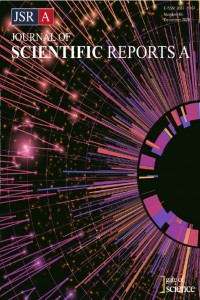Abstract
References
- [1] Hao, Y.J., Srivastava, H. M., Jafari, H., Yang, X.J., (2013), Helmholtz and di usion equations associated with local fractional derivative operators involving the Cantorian and Cantor-type cylindrical coordinates, Advances in Mathematical Physics, 2013, Article ID 754248, 1-5.
- [2] Bisquert, J., (2005), Interpretation of a fractional diffusion equation with non-conserved probability density in terms of experimental systems with trapping or recombination, Physical Review E, 72(1), 011109.
- [3] Sene, N., (2019), Solutions of Fractional Diffusion Equations and Cattaneo-Hristov Diffusion Model, International Journal of Analysis and Applications, 17(2), 191-207.
- [4] Aguilar, J.F.G. and Hernández, M.M., (2014), Space-Time Fractional Diffusion-Advection Equation with Caputo Derivative, Abstract and Applied Analysis, 2014, Article ID 283019.
- [5] Naber, M., (2004), Distributed order fractional sub-diffusion, Fractals, 12(1), 23-32.
- [6] Nadal, E., Abisset-Chavanne, E., Cueto, E. and Chinesta, F., (2018), On the physical interpretation of fractional diffusion, Comptes Rendus Mecanique, 346, 581-589.
- [7] Zhang, W. and Yi, M., (2016), Sturm-Liouville problem and numerical method of fractional diffusion equation on fractals, Advances in Difference Equations, 2016:217.
- [8] Baleanu, D., Fernandez, A. and Akgül, A., (2020), On a Fractional Operator Combining Proportional and Classical Differintegrals, Mathematics, 8(360).
DIFFUSION EQUATION INCLUDING LOCAL FRACTIONAL DERIVATIVE AND NON-HOMOGENOUS DIRICHLET BOUNDARY CONDITIONS
Abstract
In this research, we discuss the construction of analytic solution of non-homogenous initial boundary value problem including PDEs of fractional order. Since non-homogenous initial boundary value problem involves local fractional derivative, it has classical initial and boundary conditions. By means of separation of variables method and the inner product defined on 𝐿2[0,𝑙], the solution is constructed in the form of a Fourier series with respect to the eigenfunctions of a corresponding Sturm-Liouville eigenvalue problem including local fractional derivative used in this study. Illustrative example presents the applicability and influence of separation of variables method on fractional mathematical problems.
Keywords
Local fractional derivative Time-fractional diffusion equation Initial-boundary-value problems Spectral method Non-homogenous Dirichlet boundary conditions
References
- [1] Hao, Y.J., Srivastava, H. M., Jafari, H., Yang, X.J., (2013), Helmholtz and di usion equations associated with local fractional derivative operators involving the Cantorian and Cantor-type cylindrical coordinates, Advances in Mathematical Physics, 2013, Article ID 754248, 1-5.
- [2] Bisquert, J., (2005), Interpretation of a fractional diffusion equation with non-conserved probability density in terms of experimental systems with trapping or recombination, Physical Review E, 72(1), 011109.
- [3] Sene, N., (2019), Solutions of Fractional Diffusion Equations and Cattaneo-Hristov Diffusion Model, International Journal of Analysis and Applications, 17(2), 191-207.
- [4] Aguilar, J.F.G. and Hernández, M.M., (2014), Space-Time Fractional Diffusion-Advection Equation with Caputo Derivative, Abstract and Applied Analysis, 2014, Article ID 283019.
- [5] Naber, M., (2004), Distributed order fractional sub-diffusion, Fractals, 12(1), 23-32.
- [6] Nadal, E., Abisset-Chavanne, E., Cueto, E. and Chinesta, F., (2018), On the physical interpretation of fractional diffusion, Comptes Rendus Mecanique, 346, 581-589.
- [7] Zhang, W. and Yi, M., (2016), Sturm-Liouville problem and numerical method of fractional diffusion equation on fractals, Advances in Difference Equations, 2016:217.
- [8] Baleanu, D., Fernandez, A. and Akgül, A., (2020), On a Fractional Operator Combining Proportional and Classical Differintegrals, Mathematics, 8(360).
Details
| Primary Language | English |
|---|---|
| Journal Section | Research Articles |
| Authors | |
| Publication Date | December 31, 2020 |
| Submission Date | October 30, 2020 |
| Published in Issue | Year 2020 Issue: 045 |


